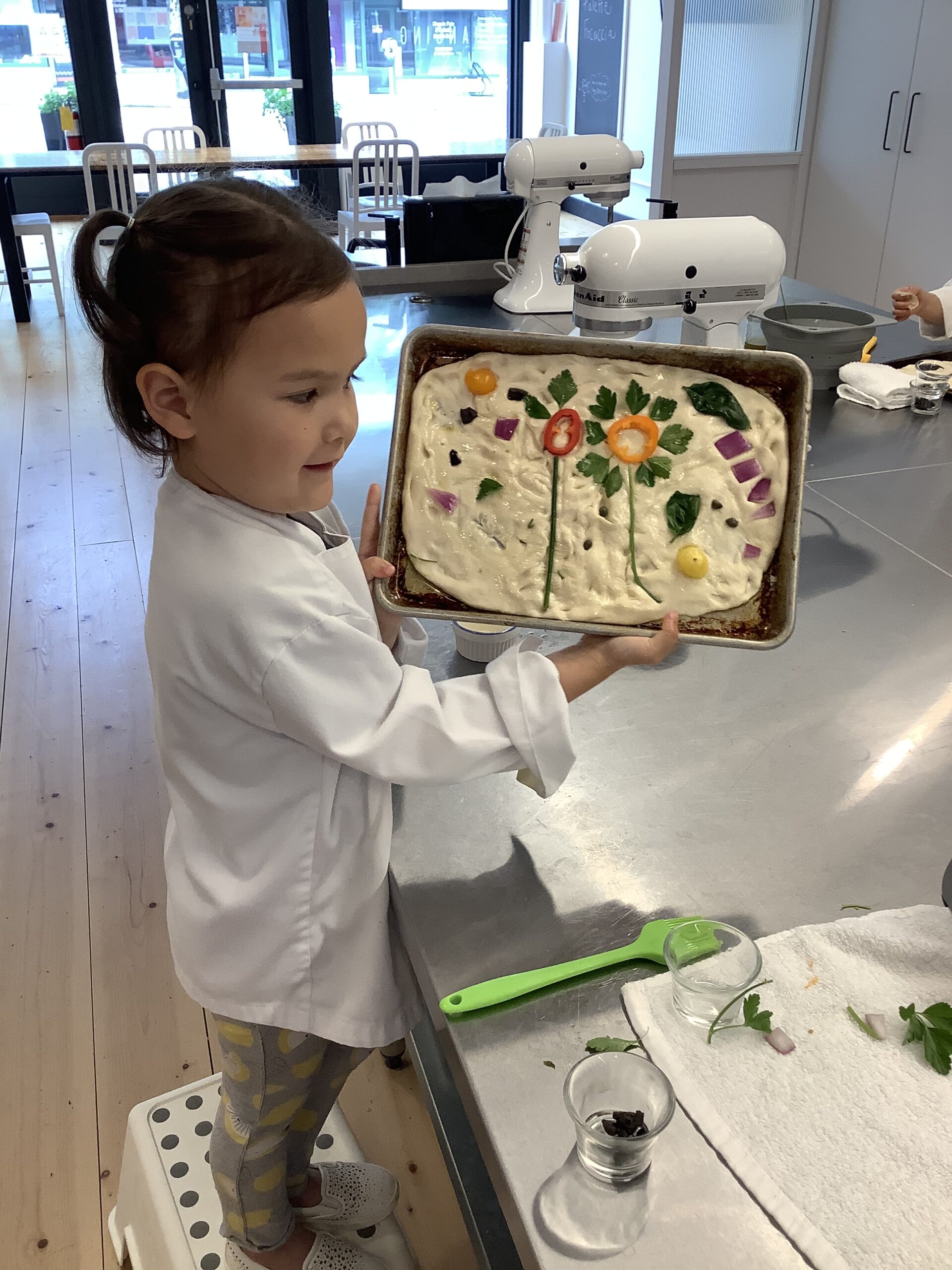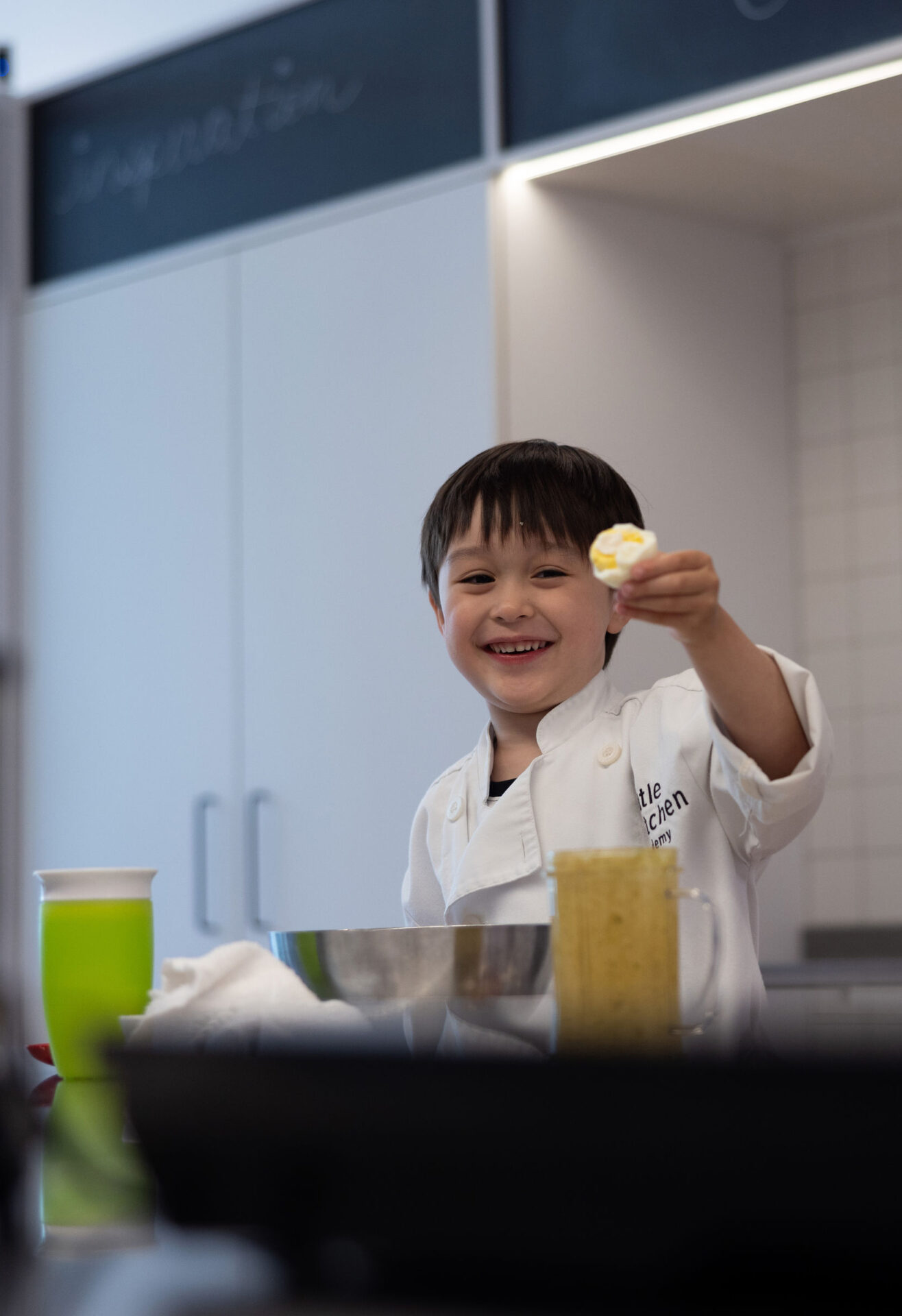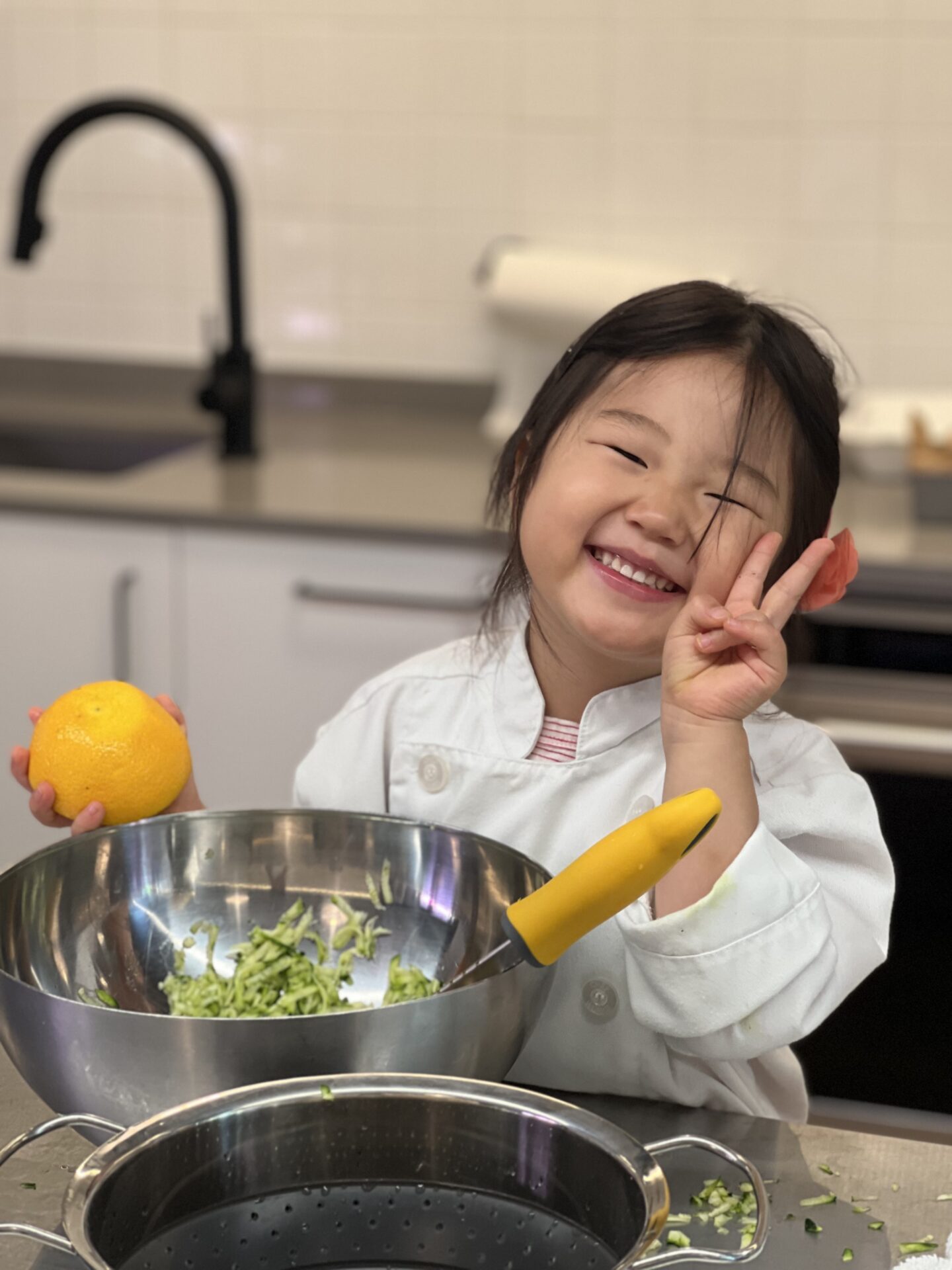
Empowering children with practical life skills and food literacy.
more than just cooking Creating healthy eating habits to last a lifetime.
Our recipes incorporate as many local, seasonal, and organic ingredients as possible. Our curriculum reflects the idea that what Mother Nature provides from the ground is what our bodies are needing at specific times of the year. Our recipes support the phrase ‘what grows together, goes together’. Each season, we add to our growing collection of custom-made recipes so our students have new and exciting recipes to prepare every week.
ingredients We strive to provide ingredients that are:
- Local — Using locally-grown products not only supports our surrounding communities but leaves less of a carbon footprint. Once produce is harvested it begins to lose nutrients, so using locally-grown food provides the most nutritional value.
- Seasonal – Food that is available to the consumer as soon as it is harvested. At Little Kitchen Academy we aim for our students to know the season by what is cooking in the kitchen.
- Organic – Food produced without using man-made inhibitors or enhancers. Non-GMO food that has not been modified or changed using scientific method.
We encourage our students to plant, nurture, harvest and prepare produce, because we know that when we are active participants in our food choices, we will try them and, more often than not, ENJOY them! Our Living Food Wall powered by AeroGarden has plants at different stages of growth so our students can observe, care for, and enjoy the literal ‘fruits of their labour!’ Perhaps a child that has always said that they don’t like tomatoes will discover that they, in fact, DO like tomatoes when they have been picked, washed, chopped and slightly seasoned? Or maybe caramelized in the oven with garlic, salt, and pepper?
recipesAll our recipes are free of meat, poultry, seafood, and nuts.
Handling products such as raw meat or poultry requires more caution and care in the kitchen, especially with a large group of excited students. Students’ safety is one of our top priorities in class, and to eliminate the risks, we decided to keep our kitchen free of meat, poultry, seafood and nuts. We do not identify or present labels for diets. Our job is to empower each student so they can decide what is best for them. When sitting at the community table, enjoying our food, we will ask leading questions like “what else would be good in this meal?” or “how could we change this to suit our tastes better?” This kind of conversation allows our students to share ways to add meats, poultry, seafood, and nuts to these meals when cooking at home.
The only allergen not welcome in Little Kitchen Academy is nuts. While we take every precaution possible to support all allergies, nut allergies can be airborne and simply unsafe. Again, while eating our food at the community table, we are able to suggest adding toasted nuts to different recipes at home if the taste buds are willing. We understand that there are more dietary needs/choices/preferences/trends than there are types of apples (and there are over 7500 varieties of apples!) It is a pleasure and an honour to work with our students to give them the confidence and the skills to advocate for themselves on what is best for their bodies.


allergies A variety of choices to accommodate food allergies.
If our students need to make a recipe gluten-free, dairy-free, or substitute an ingredient or two because of an allergy or intolerance, we will make it happen! Understanding other people’s dietary restrictions creates empathy and connection. Students might learn about different types of flour by watching a student with a wheat allergy make gluten-free muffins. Maybe watching a friend add zucchini to their bread will encourage trying it out themselves.
Students at Little Kitchen Academy will learn to ask ‘what is in my food’, ‘where does it come from’, ‘how does it benefit my body’, and ‘how can I prepare it to make it delicious to me?’
We don’t give our children enough credit: their palates are remarkable; they just need a space to refine them and to understand what kind of flavors they do like, at their own pace and by their own discovery path.
Felicity Curin, Founder, President & COO